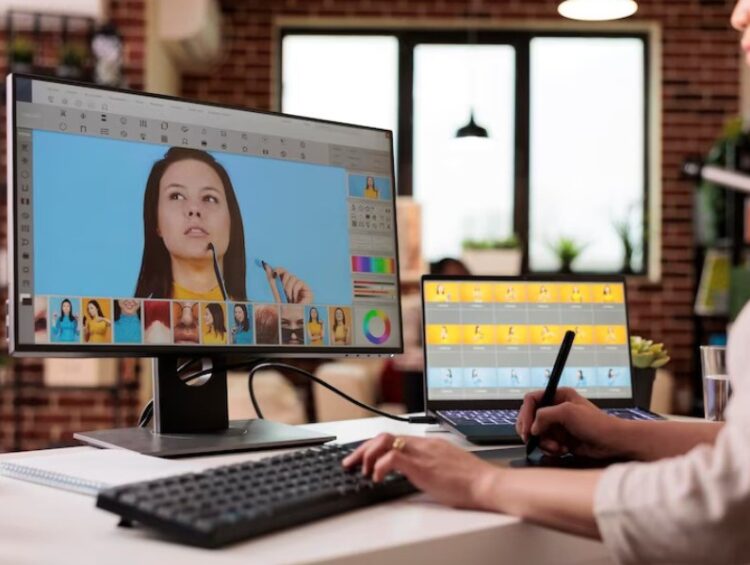In the fast-paced digital age, where visual content reigns supreme, the importance of high-quality images cannot be overstated. Whether you’re a professional photographer, a social media enthusiast, or a business owner, the art of image editing plays a pivotal role in elevating your visual content. ThisUnlocking the Power of Image Editing: Enhancing Visual Appeal with Precision
In the fast-paced digital age, where visual content reigns supreme, the importance of high-quality images cannot be overstated. Whether you’re a professional photographer, a social media enthusiast, or a business owner, the art of image editing plays a pivotal role in elevating your visual content. This article delves into the intricacies of image editing, exploring its significance and providing insights into how it can be a game-changer in the realm of digital aesthetics.
The Essence of Image Editing
In the expansive realm of digital media, an image is worth more than a thousand words. However, raw photographs don’t always capture the essence or convey the intended message effectively. This is where image editing steps in as a transformative tool, allowing individuals and businesses to refine, enhance, and optimize their visuals.
- Precision Enhancement
Image editing isn’t just about adding filters or adjusting brightness; it’s a meticulous process that involves fine-tuning every element of an image. Professionals use advanced editing techniques to enhance details, correct colors, and ensure that the final product meets the highest standards. Whether it’s a photograph for a magazine cover or an image for an online advertisement, precision enhancement is the key to making a lasting impact.
- Crafting a Consistent Brand Image
For businesses, maintaining a consistent brand image is imperative. Image editing empowers companies to align their visual content with their brand identity seamlessly. From adjusting colors to incorporating logos, businesses can use image editing to create a cohesive and recognizable brand presence across various platforms.
- Removing Distractions and Imperfections
No photograph is flawless, but image editing allows for imperfections to be discreetly erased. Whether it’s removing background clutter or enhancing facial features, the process enables the creation of polished and professional visuals. This level of attention to detail is particularly crucial for businesses relying on compelling visuals to attract and engage their audience.
Leveraging Stock Photos in Image Editing
In the vast landscape of image editing, the role of stock photos cannot be ignored. Stock photos serve as a valuable resource for professionals and hobbyists alike, providing a diverse array of high-quality visuals that can be seamlessly integrated into various projects.
- Diversifying Visual Content
Stock photos offer a treasure trove of diverse and professionally curated images covering a multitude of themes and subjects. By judiciously incorporating stock photos into their image editing workflow, content creators can diversify their visual content without the need for extensive photoshoots. This not only saves time but also expands the creative possibilities for individuals and businesses.
- Time and Cost Efficiency
Professional photoshoots can be time-consuming and expensive. Stock photos provide a cost-effective alternative, enabling individuals and businesses to access high-quality visuals without the need for an extensive budget. In the realm of image editing, this translates to significant savings in both time and resources, allowing for a more streamlined and efficient content creation process.
- Meeting Project Deadlines with Ease
In the fast-paced world of digital marketing and content creation, meeting tight project deadlines is often a challenge. Stock photos, coupled with efficient image editing techniques, offer a solution. Content creators can leverage the vast libraries of stock photos to quickly find suitable visuals, and with precise editing, tailor them to fit the specific requirements of their projects.
The Technical Landscape of Image Editing
While the creative aspects of image editing are crucial, understanding the technical landscape is equally important. From basic adjustments to advanced retouching, professionals navigate a plethora of tools and techniques to achieve the desired results.
- Color Correction and Grading
Color plays a pivotal role in setting the mood and tone of an image. Image editing allows for precise color correction and grading, ensuring that visuals are not only aesthetically pleasing but also aligned with the intended emotional impact. This level of control over color is particularly beneficial for those looking to evoke specific responses from their audience.
- Non-Destructive Editing
One of the hallmarks of professional image editing is the practice of non-destructive editing. This technique involves making edits in a way that preserves the original image, allowing for adjustments to be fine-tuned or reversed without compromising image quality. This meticulous approach ensures that the final result meets the highest standards while providing flexibility throughout the editing process.
- Advanced Retouching Techniques
Beyond basic adjustments, advanced retouching techniques are employed to achieve flawless and natural-looking results. From portrait retouching to the removal of complex objects, these techniques require a deep understanding of the tools at one’s disposal. The seamless integration of stock photos into these processes further enhances the editor’s ability to create visually stunning and impactful images.
Conclusion
In conclusion, image editing is a dynamic and indispensable tool for individuals and businesses seeking to make a visual impact in the digital landscape. From precision enhancement to creating a consistent brand image, the possibilities are vast. The strategic integration of stock photos into the image editing workflow adds a layer of efficiency and creativity, enabling content creators to meet their objectives with finesse.
As we navigate the evolving landscape of digital aesthetics, mastering the art and science of image editing becomes not just a skill but a strategic advantage. The judicious use of stock photos, combined with precise editing techniques, empowers creators to elevate their visual content, making a lasting impression in the minds of their audience. In a world where images speak volumes, image editing emerges as the silent yet powerful architect of visual narratives.
article delves into the intricacies of image editing, exploring its significance and providing insights into how it can be a game-changer in the realm of digital aesthetics.





